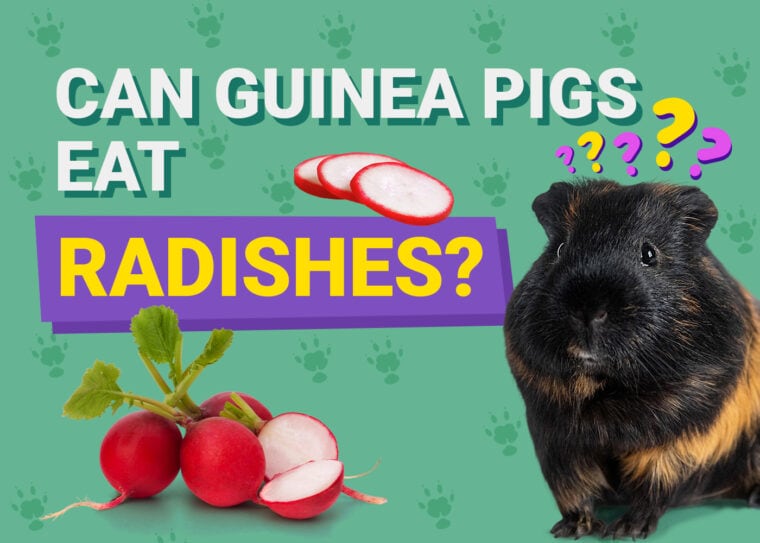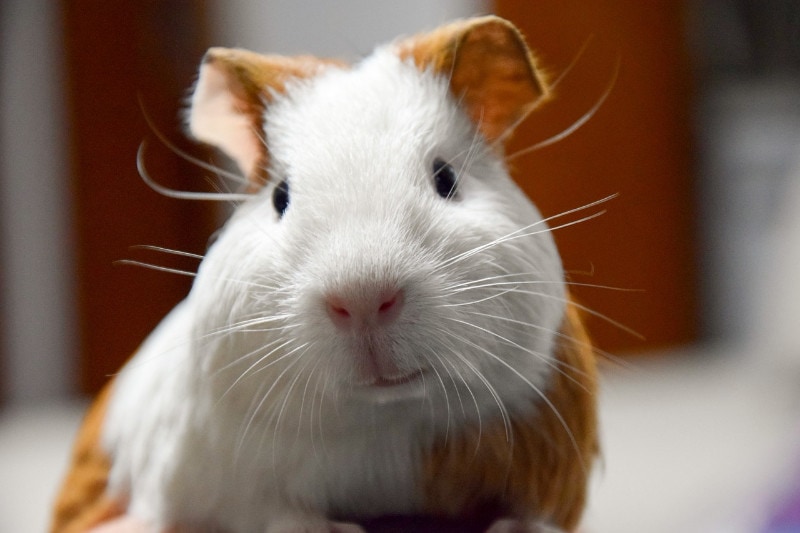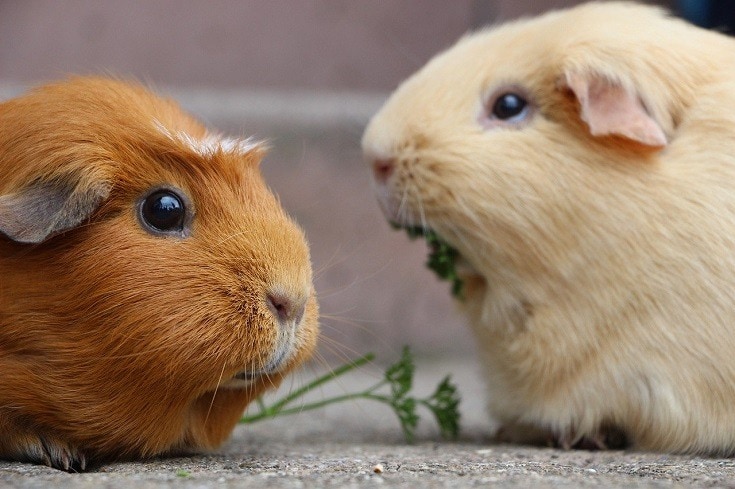
Click to Skip Ahead
As herbivorous pets, guinea pigs often show interest in fruits and vegetables offered to them. However, as a pet owner, knowing if certain foods are safe for guinea pigs to consume might be a concern.
As a guinea pig parent, you can rest assured that your guinea pig can safely eat radishes. However, as with all vegetables, portion control is key. Read on as we explore a guinea pig’s diet and where radishes fit into the mix. We’ll also talk about the safest way to offer your guinea pig this and other vegetables.
Guinea Pig Diet
The bulk of their diet should be made of high-quality pellets made specifically for them and an unlimited amount of good quality hay, such as timothy, orchard, grass, and oat hay. These two elements should constitute about 80–90% of their diet.
In addition to these two items, guinea pigs also require a daily serving of fresh leafy vegetables (about a cup) that are high in vitamin C. This is important because guinea pigs cannot make their own vitamin C. Vegetables that you offer your guinea pig should be thoroughly washed and served raw. Uneaten vegetables should be discarded at the end of each day.
Variety in the vegetables you offer your guinea pig is key; rather than offering them just 1 vegetable a day, you should mix about 4–5 (or more) for their vegetable serving of the day. Rotate these vegetables with 4–5 different vegetables the next day, if possible. Such mixes are ideal for their health, as different vegetables have different nutritional profiles.
When it comes to treats, guinea pigs can be offered some grains and fruit on occasion as a treat (these should only be offered once or twice a week and should only constitute a small portion of their intake for the day (approximately 5–10% at most).

Radishes and Guinea Pigs
Radishes can be added to your guinea pig’s diet as part of the vegetable component of their diet. The nutritional profile of radishes offers your pet some key benefits:
Per 100 grams, radishes contain:
Though some other vegetables offer more vitamin C than radishes (kale, parsley, red bell peppers), radishes contain other micronutrients in the form of minerals and vitamins, which make them a healthy and safe addition to your guinea pig’s diet.
Are All Radishes Safe for Guinea Pigs?
All types of radish are safe for guinea pigs to consume.

Risks Associated With Overfeeding Radish
As with all vegetables, moderation is key when it comes to your guinea pig’s health. The risk associated with overfeeding guinea pigs is a nutritional imbalance which often presents itself with one or more of the following signs:
It is, therefore, very important to properly portion radish (and other vegetables) when feeding your guinea pig. If you’re in doubt about your guinea pig’s diet, you should schedule a consultation with your veterinarian to ensure that your guinea pig is properly fed.
How to Feed Radishes to Your Guinea Pig
It is important to note that you should exercise extreme caution if you want to offer your guinea pig radish from your salad (or any other food that you prepare with radish in it). The seasonings and other ingredients in your food may not be safe for your guinea pig. It’s, therefore, best to prepare your guinea pig’s food separately.
Conclusion
Radish is safe for guinea pigs to consume as long as you portion and prepare it properly. As with many vegetables, portion control is key when it comes to your guinea pig’s diet. If you’re in doubt about your guinea pig’s diet, do reach out to your veterinarian to discuss your concerns about their culinary well-being.








